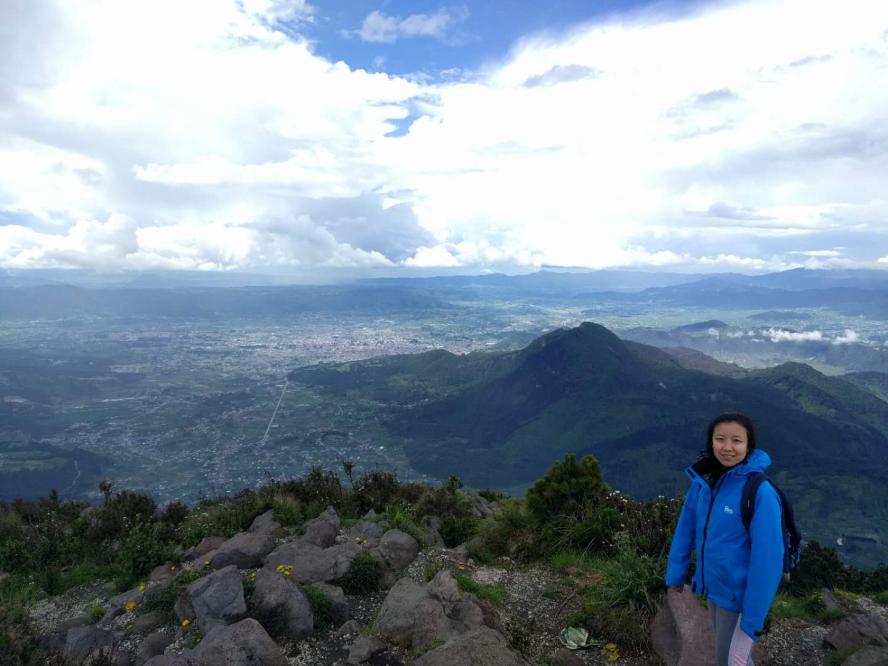-
About
- Departments & Offices
-
Academics
- Public Health
- Biomedical Sciences
- Physician Assistant
- Special Master’s (MBS)
-
Admissions & Financial Aid
- Tuition & Fees
-
Student Experience
-
- Student Resources by Program
- Academic & Student Support
- Wellness & Wellbeing
- Student Life
- Events & Traditions
-
-
Research
- Research Labs & Centers
- Tufts University-Tufts Medicine Research Enterprise
-
Local & Global Engagement
- Global Health Programs
- Community Engagement
ALE Spotlight: Body Composition & Breast Milk Fat Content Among Lactating Mothers in Guatemala
Tufts’ Applied Learning Experience (ALE) provides students with real-world experience designing and implementing a public health project.

By Ruijia Niu, MPH '18
In Guatemala, 46.5% of the children under the age of five suffer from stunting (2014-2015), which is more prevalent compared to the other Central American countries.1 Stunting is defined as a height-for-age that is more than two standard deviations below the World Health Organization (WHO) Child Growth Standards median and is caused by poor nutrition, repeated infection, and inadequate psychosocial stimulation.2 According to the WHO, the critical period for children’s longitudinal growth is the first 1,000 days after birth and they recommend that mothers breastfeed exclusively for the first six months. In Guatemala, 53% of mothers comply with this recommendation, making breast milk the main source of nutrients and energy for infants and key to eliminating child stunting.
Studies have shown that maternal health directly impacts the nutrition components in breast milk. In order to understand specifically how maternal body composition changes during postpartum stages and how it associates with breast milk fat content, I carried out my Tufts MPH Applied Learning Experience (ALE) project in Guatemala with the guidance and support of Dr. Noel W. Solomons and Rosario Garcia-Meza from the Center for Studies of Sensory Impairment, Aging and Metabolism (CeSSIAM). With assistance from team members at CeSSIAM, forty lactating women whose infants were between 37-194 days old were recruited to participate in my study. At a local health clinic, we measured these mothers’ hydration status and percent body fat through bioelectrical impedance analysis and collected a complete sample of milk expressed from both breasts. In a laboratory at CeSSIAM’s office, we evaluated the samples using the creamatocrit technique, a procedure that uses a centrifuge to separate the cream from the milk, which is then measured to determine the fat content of the breast milk. I analyzed the quantitative data using analysis of variance (ANOVA) and multivariate linear regression and reported the results to the research team while I was in Guatemala.
My study found that the hydration status and maternal percent body fat was not significantly different among mothers of different postpartum stages. Similar to prior studies, breast milk fat content was found to be positively associate with maternal percent body fat within the studied postpartum period (37-194 days). Due to time constraint, I was only able to conduct a cross-sectional study, which might not have captured the actual maternal body composition change during postpartum period. In future research a longitudinal study is recommended to draw a more generalizable conclusion on how the two parameters of body composition change during postpartum lactation period. A wider postpartum period is also recommended to calibrate the equation between maternal percent body fat and breast milk fat content.
Besides completing my pre-planned research project, while I was in Guatemala I joined two other research studies being conducted by CeSSIAM and I got the opportunity to visit traditional midwives and new-born mothers in rural areas of Quetzaltenango. I also used my spare time to learn Spanish so that I could have basic conversations with local people. Additionally, through talking with CeSSIAM researchers, local friends and my homestay family, I gained an in-depth understanding of Guatemalan health system and their culture.
I learned a lot from this ALE, from lab techniques to a new language and primary research skills. However, the most important thing I learned is that as a person who received higher education in the U.S., we often think of ourselves as privileged when facing communities like those in Guatemala. What is often overlooked is that each community has their own unique privileges and problems. As a future global public health practitioner, I learned that a successful program comes from embracing a community, experiencing their problems and understanding their resources. I will always remember that they are their own savior, and I can only help.
I want to acknowledge Professors Odilia I. Bermudez, Mireille Aramati and Virginia R. Chomitz, for their direction and support throughout my ALE project and their insightful advice on my academic life. I would also like to acknowledge the Tufts School of Medicine Travel Scholarship Program for the financial support granted to me.
1.https://data.unicef.org/wp-content/uploads/2017/01/UNICEF_Expanded_Global_Databases_Stunting_January_2018-1.xlsx
2.http://www.who.int/nutrition/publications/infantfeeding/essential_nutrition_actions/en/
3.https://data.unicef.org/wp-content/uploads/2017/11/UNICEF_Expanded_Global_Databases_Infant_Feeding.xlsx
4. Barbosa L, Butte N, Villalpando S, Wong W, Smith E. Maternal energy balance and lactation performance of Meso-amerindians as a function of body mass index. The American journal of clinical nutrition. 1997;66(3):575-583.